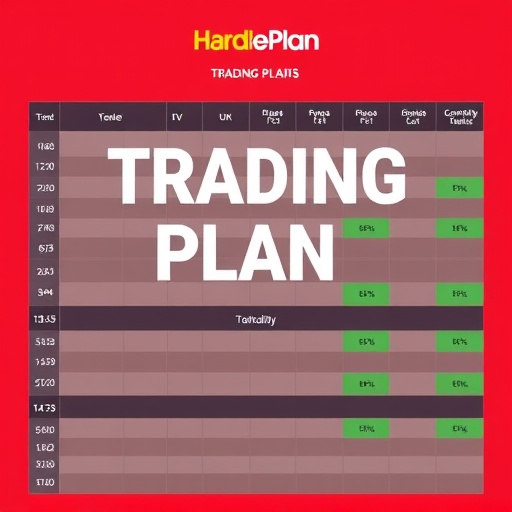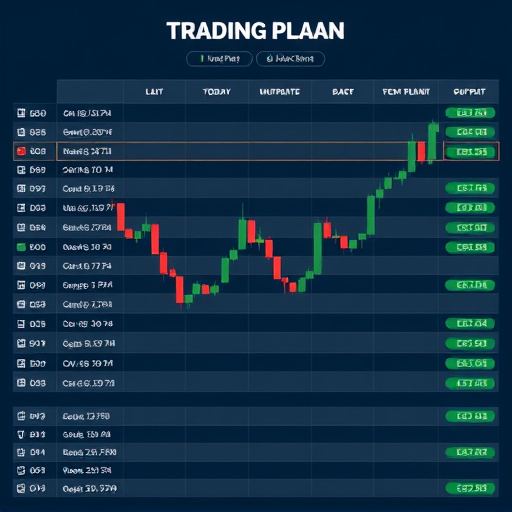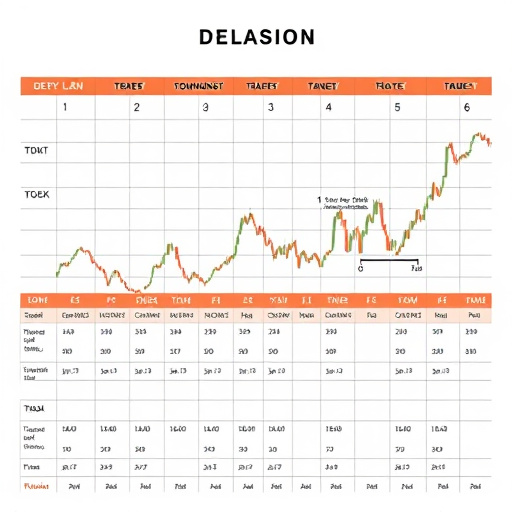Master Your Trading Journey: Unveiling the Essential Elements of a Plan
A well-structured trading plan is crucial for navigating financial markets, acting as a compass with strategic guidance. It includes defining your strategy, setting clear objectives, managing risk through stop-loss orders and position limits, an…….

A well-structured trading plan is crucial for navigating financial markets, acting as a compass with strategic guidance. It includes defining your strategy, setting clear objectives, managing risk through stop-loss orders and position limits, and establishing entry/exit rules based on technical or fundamental analysis. This plan promotes discipline, reduces emotional biases, increases consistent performance, and ensures each trade aligns with broader market goals. By implementing these core components, traders can adapt during volatility, achieve financial goals, and maintain long-term market stability.
Unleash your inner trader by unlocking the secrets of a robust trading plan—your roadmap to financial success. This comprehensive guide delves into every facet, from understanding core components like risk management and entry strategies, to crafting a personalized approach tailored to your goals and risk tolerance. Learn how to implement, monitor, and adjust your plan effectively using tools like trading journals, ensuring discipline amidst market volatility. Discover the power of a well-defined trading plan and elevate your investment journey today.
- Understanding the Core Components of a Trading Plan
- – Defining a trading plan: purpose and benefits
- – Key elements: risk management, entry/exit strategies, position sizing
Understanding the Core Components of a Trading Plan

A well-structured trading plan is akin to having a compass in a maze; it guides traders through the intricate landscape of financial markets, ensuring every step is strategic and calculated. Core components include defining your trading strategy, setting clear objectives, determining risk parameters, and establishing entry and exit rules. This foundational layer provides the clarity needed to navigate market volatility.
Each element plays a vital role in shaping your approach. Strategy outlines the methodology—whether it’s trend following, news-based trading, or range-bound play—while objectives set measurable goals, keeping you focused. Risk management defines stop-loss levels and position sizing, safeguarding capital. Together, these components transform intuitive trading ideas into disciplined action, increasing the likelihood of consistent performance in an unpredictable market.
– Defining a trading plan: purpose and benefits

A well-defined trading plan is a powerful tool for investors and traders, offering a structured approach to navigating the markets. Its primary purpose is to outline clear objectives, strategies, and rules that govern trading activities. By creating a comprehensive plan, traders can make informed decisions, reduce emotional biases, and increase their chances of success in achieving financial goals.
The benefits are manifold; it provides a roadmap for consistent execution, ensuring each trade aligns with broader market goals. This discipline helps traders stay focused during volatile markets, enabling them to adapt strategies while adhering to the plan’s framework. Ultimately, a trading plan fosters transparency and accountability, allowing investors to measure performance, identify areas of improvement, and make necessary adjustments, thereby unlocking their full potential in the dynamic world of trading.
– Key elements: risk management, entry/exit strategies, position sizing

A well-structured trading plan is the cornerstone for successful navigation in financial markets. Among its critical components, three key elements stand out: risk management, entry/exit strategies, and position sizing. Risk management involves setting clear parameters to safeguard capital and mitigate potential losses. This includes defining stop-loss orders and implementing position limits, ensuring that even in unfavorable market conditions, the trader’s exposure remains within manageable bounds.
Entry and exit strategies, on the other hand, dictate when to step into a trade and when to exit it profitably. These strategies could involve technical indicators, fundamental analysis, or a combination of both. Position sizing, a crucial aspect that determines how much capital to allocate per trade, ensures that each trade contributes rationally to the overall portfolio risk. Balancing these elements effectively is vital for consistent performance and long-term sustainability in trading.
A well-defined trading plan is an indispensable tool for any trader seeking success in the market. By understanding and implementing the core components – risk management, entry/exit strategies, and position sizing – traders can make informed decisions, stick to their objectives, and ultimately unlock their full potential. A structured approach enhances discipline, reduces emotional bias, and increases the likelihood of consistent profitability. So, embrace the power of a trading plan and let it guide you towards achieving your financial goals.







